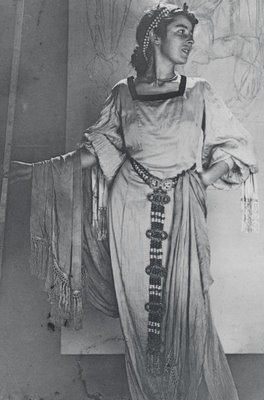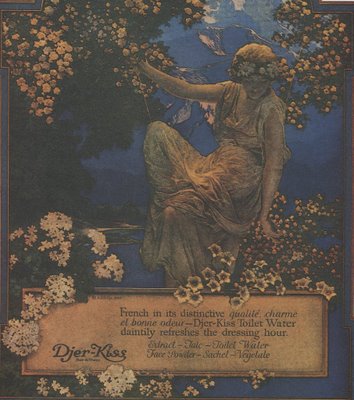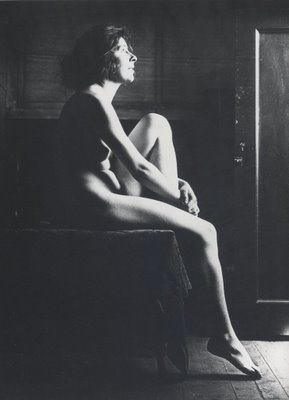That strikes me as a pretty dumb thing to say. However, it does serve as a useful springboard for talking about the intriguing relationship between art and love.

Maxfield Parrish was 33, a successful illustrator living on a grand country estate, when he first met Sue Lewin. She was a 16 year old girl from a nearby farm town hired to help Parrish and his wife care for their two young children. Because Parrish's wife would no longer pose for him, he drafted their young nanny to pose in fairy tale costumes.

Lewin soon became his muse, modeling for his most famous illustrations.


Eventually Parrish moved out of the mansion where his wife and children stayed and set up residence in his art studio so that he and Lewin could work closely together. Not long after that, Parrish's wife began taking their children away on extended trips.
The villagers from the tiny farm town were scandalized by this living arrangement and even sent a delegation out to the estate to confront Parrish. But Parrish and Lewin both insisted that their relationship was purely Platonic. The relationship between Parrish and Lewin is captured in an excellent book by Alma Gilbert.
To her dying day, Lewin was adamant, "I'll have you know that Mr. Parrish has never seen my bare knee." After Parrish and Lewin had passed away, construction workers at the estate found a secret compartment where Parrish had hidden the nude photographs he had taken of Lewin.

Lewin was Parrish's constant companion for 55 years. He and Lewin must have had a magical life together out in the country. When Parrish was 90 years old and Lewin was 71, Parrish's wife finally died, leaving him free to marry Lewin. However, he declined so she packed her bags, left the estate and went back to her village where she married someone else. It is difficult to fathom why Parrish could not commit to Lewin after all they had been through together. At age 90, he could hardly have been holding out for a better offer. Parrish was a brilliant painter with a rich and vivid imagination. But for some reason, he just wasn't big enough to make a commitment to reality, and he died alone a few years later.











